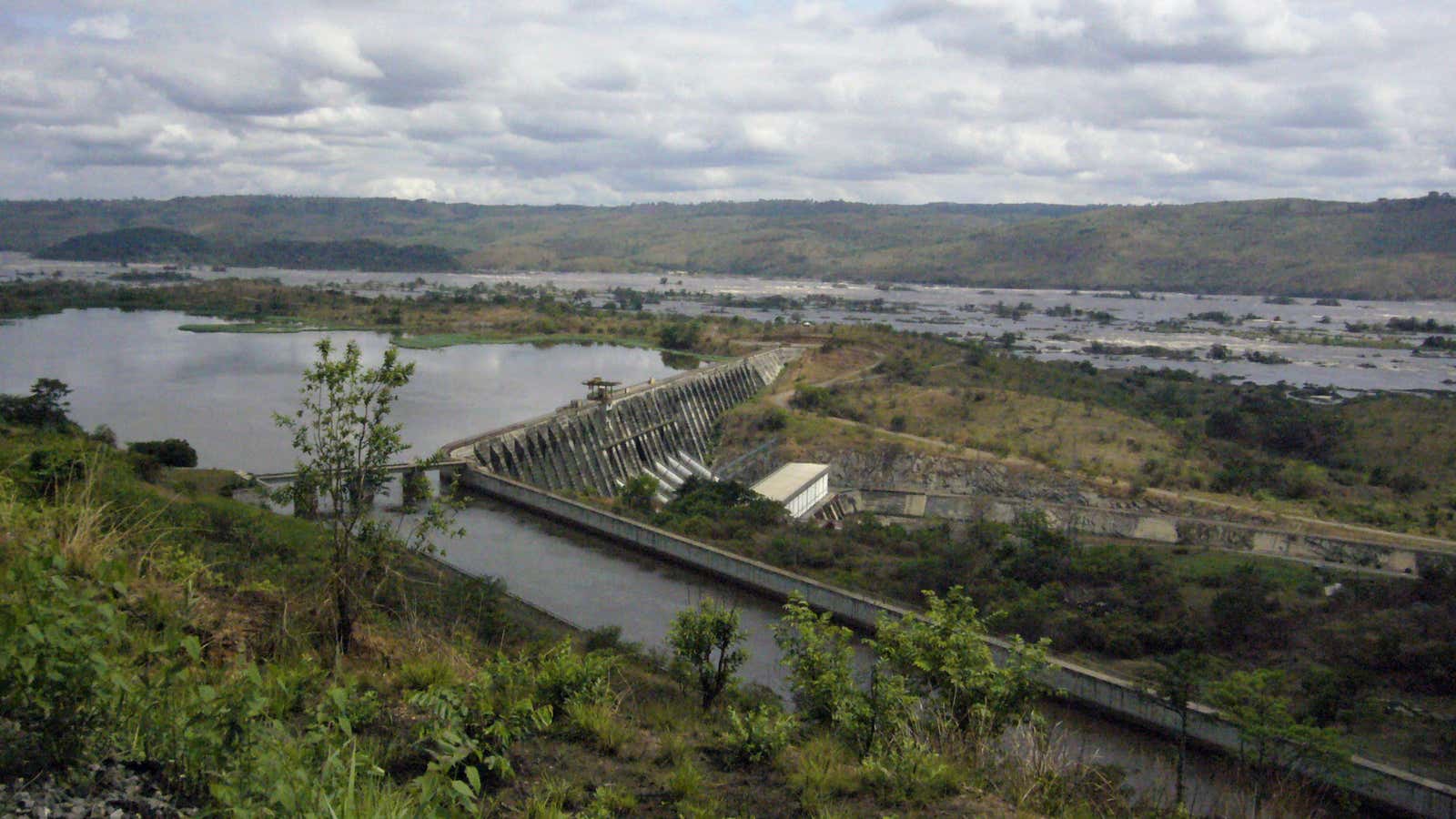The US government and China don’t find many opportunities for partnering up these days, other than ill-defined “cooperation agreements” on topics like science and technology. That may be about to change with the world’s largest dam project, being built now in the Congo.
USAID, the US government development agency, is interested in partnering with China’s state firms on the Inga III dam project, Benoit Tshibangu Ilunga, a lawyer with Congolese firm Tshibangu Ilunga & Partners, which is involved in the dam project, told the South China Morning Post.
The top USAID administrator said last month that the agency was considering financing some of the dam, and a USAID spokesman told the Post that it “continues to work with a wide range of partners to determine whether an Inga dam project would be financially, environmentally, socially, and politically viable.” Chinese state firms Three Gorges Corp. and Sinohydro make up one of three groups of bidders on Inga III. They are bidding against South Korean and Spanish groups.
However, Congress made such a deal more problematic in the appropriations bill it passed last week, when it said that the US would use its stake in international lending groups like the World Bank “to oppose any loan, grant, strategy or policy of such institution to support the construction of any large hydroelectric dam.”
Governments have dreamed “for decades” of expanding the Inga dam project, located on the Congo 140 miles southwest of Kinshasa, but it has been stymied by years of conflict and misrule in the Congo, as Reuters reported recently. Last year, South Africa signed a deal to buy 2,500 MW of power, providing funding for the project to go ahead. The entire Inga damn project, known as the Grand Inga plan, will cost $100 billion to build and generate nearly 40,000 megawatts of electricity—almost double the size of China’s Three Gorges Dam project, if it is ever completed.
